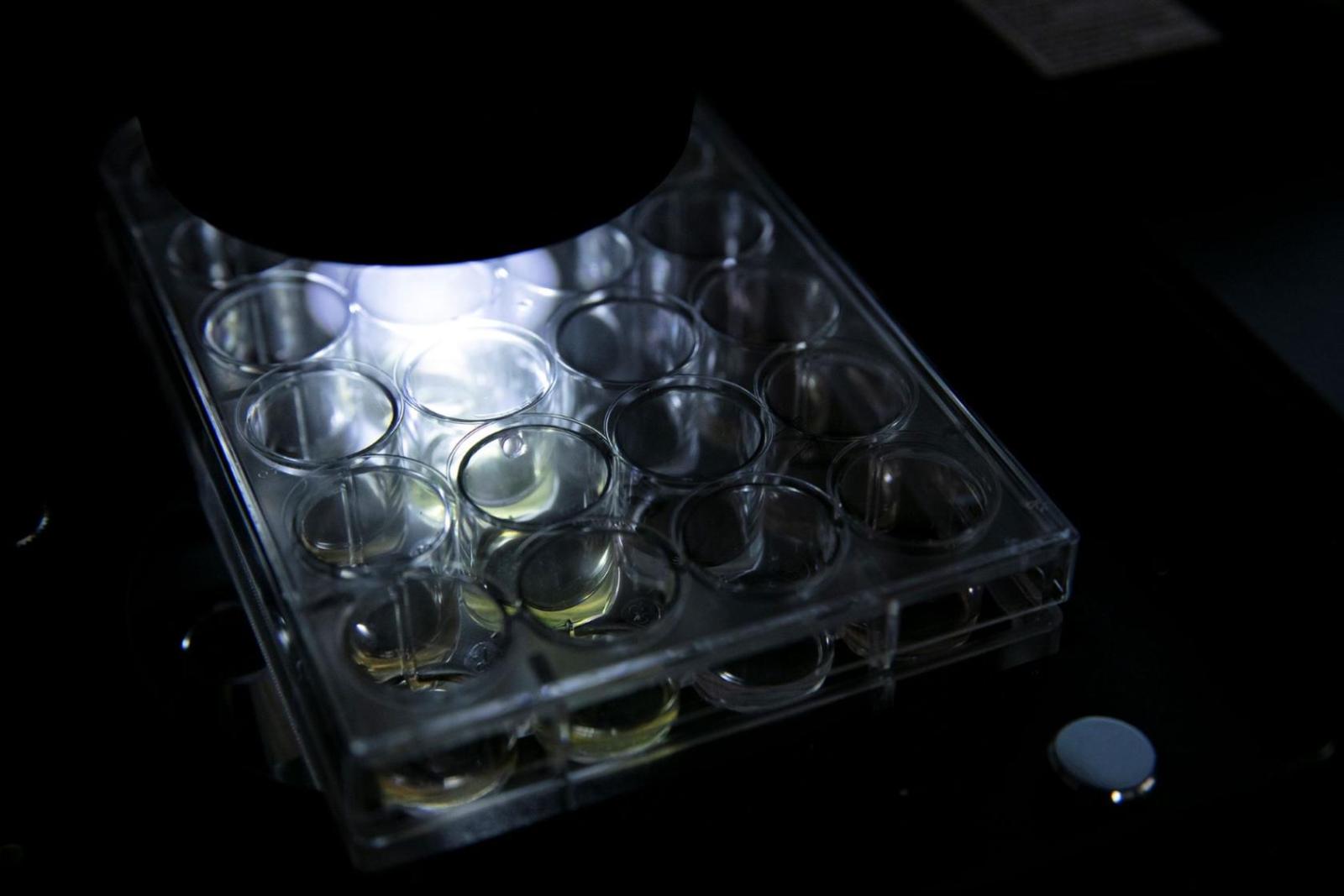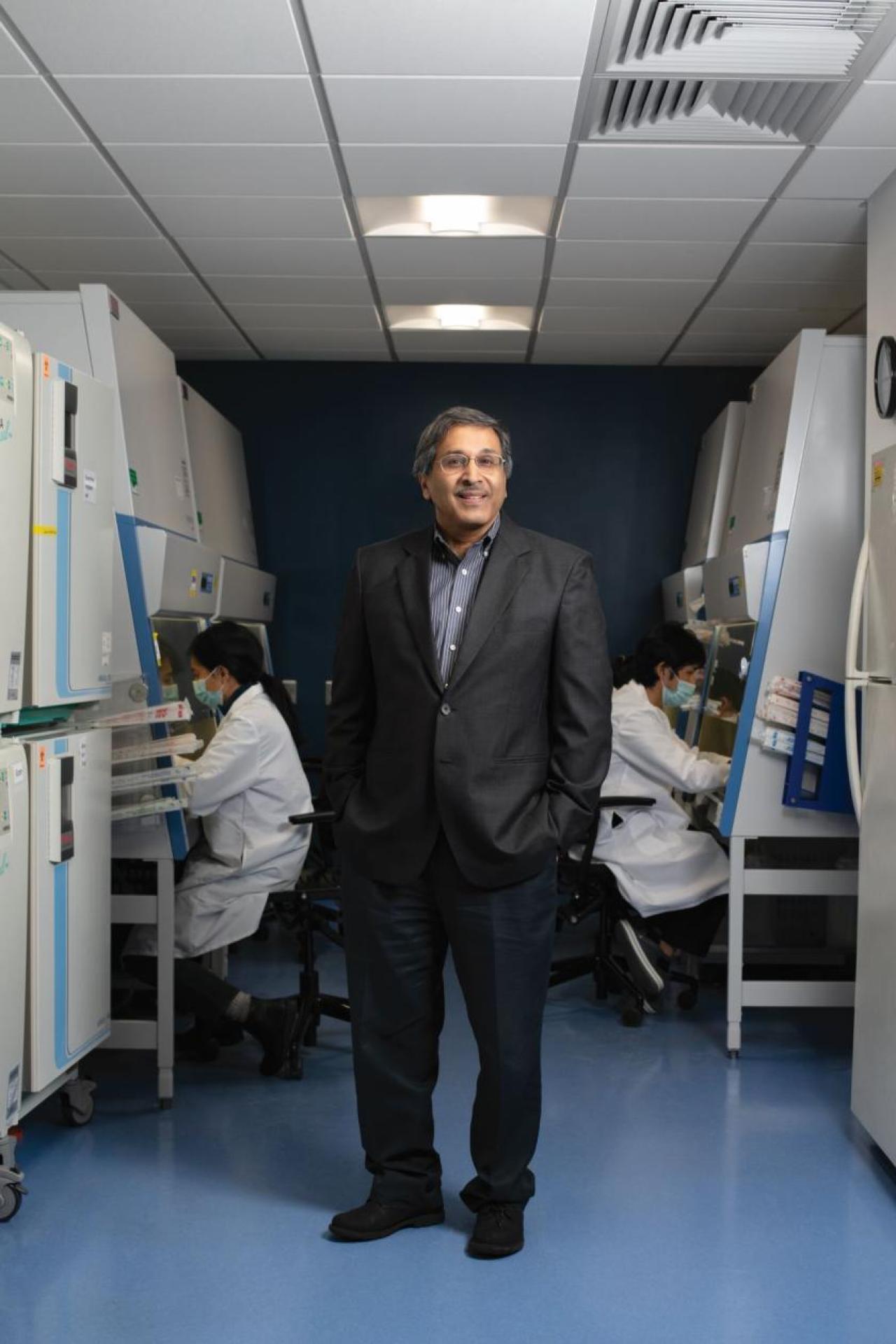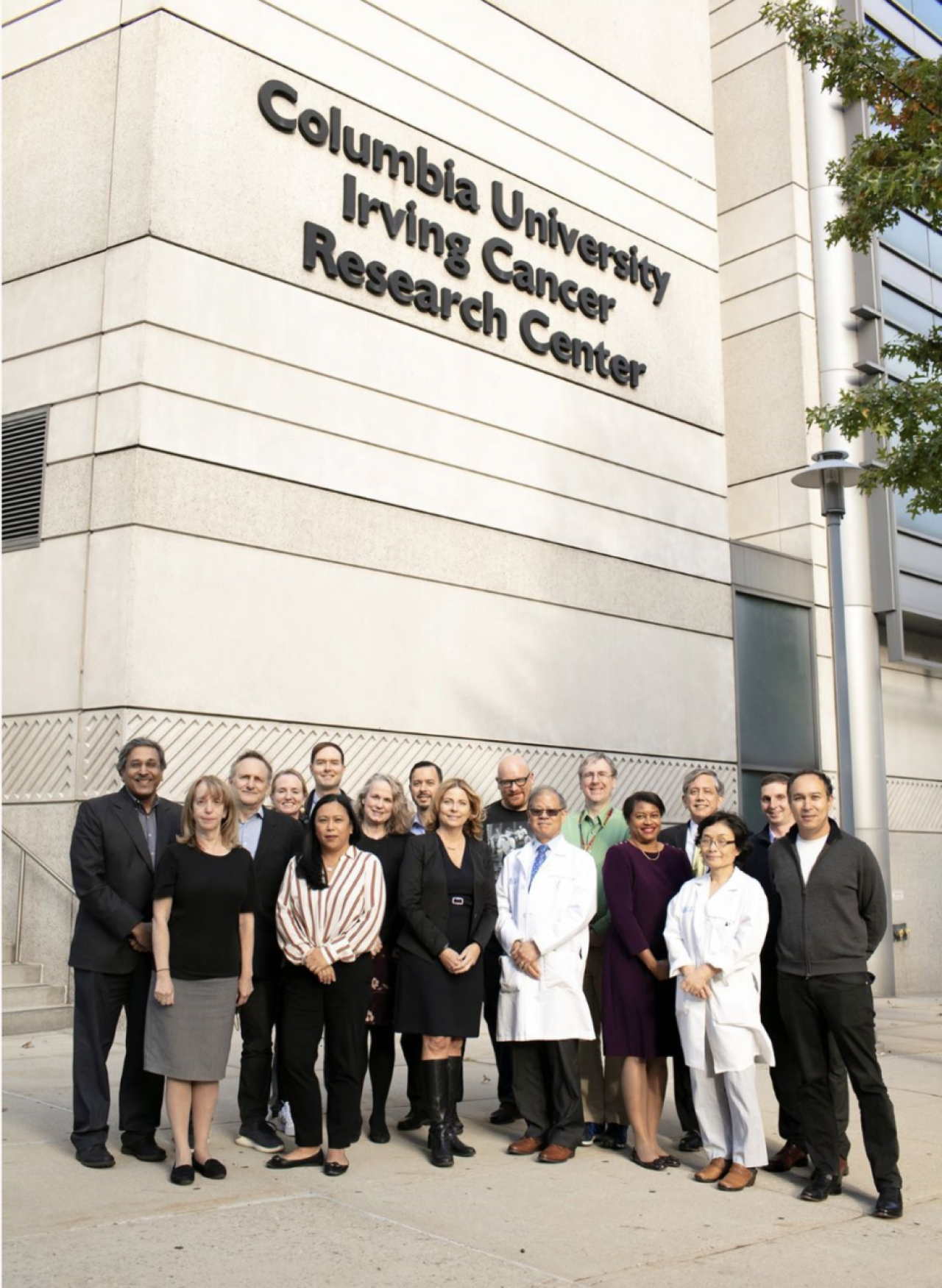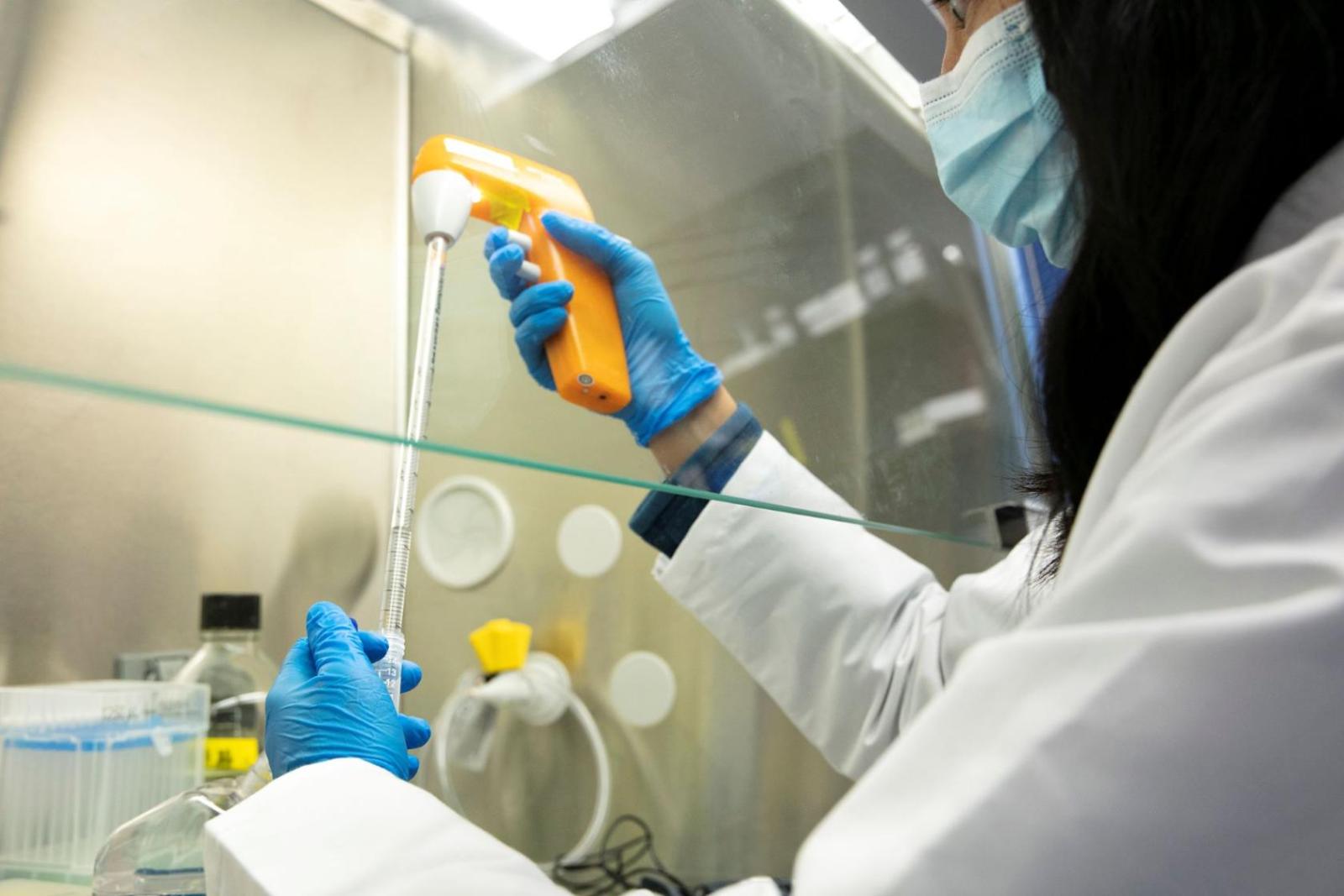
Columbia's cancer research program began in earnest more than a century ago when the millionaire son of a railroad magnate, after losing his wife to stomach cancer, died in his mid-50s of the same disease. Despite the tragic beginning, the program now known as the Herbert Irving Comprehensive Cancer Center has developed into the source of some of the most important cancer research of our time.

"I think of our cancer center as a combination of a think tank and a service organization," says Anil Rustgi, MD, the center's director since early 2019 and an expert in gastrointestinal oncology. "That's our credo. If we follow that credo, we're accomplishing our missions to advance science and medicine and to serve our members, our campus, our patients, our communities, and beyond."
The birth of Columbia's cancer research program can be traced to a 19th century ultimatum. When Charles Crocker, a founder of the Central Pacific Railroad, died in 1888, he bequeathed his children each a share of his fortune. But one son's inheritance came with a catch: George Crocker would not receive his $6 million until he proved to his brothers he could abstain from alcohol for five years. George received his inheritance after eight years and a stint in a sanitarium. He lost his wife, Emma, to cancer then received a cancer diagnosis himself. When George died in 1909, he left $1.5 million to Columbia for what the New York Times described as "the prosecution of researches as to the cause, prevention, and cure of cancer." The university established the Crocker Special Research Fund to oversee the research.
Today, 50 years since the National Cancer Act served as a catalyst for the growth and expansion of cancer research and care at Columbia, the HICCC spans six schools and 35 departments across Columbia. It has more than 250 members and associate members, including more than two dozen faculty who have been inducted into the National Academy of Sciences and/or the National Academy of Medicine. In 2020, the National Cancer Institute renewed the center's comprehensive designation through 2025, with outstanding merit and a 40% increase in funding.
The next five-or 50-years are full of possibilities for the center. With a new clinical cancer building planned and the additional funding, aspirations are high. Says former director Riccardo Dalla-Favera, MD, the center's director from 2005 to 2011, "What I hope will happen, and what I think is happening, is a better exploitation of the enormous talent and discoveries that we have here at Columbia."

When President Richard Nixon declared a "war on cancer," the disease had become the second leading cause of death in the United States, a grim statistic that has not changed over the past 50 years. Nixon used the National Cancer Act of 1971 to assemble the troops, enlisting the National Cancer Institute to distribute grants that would build and support strong centers of cancer research across the country.
Columbia, already established in cancer research thanks to the Crocker fund (since organized as the Institute of Cancer Research and occupying two floors in what is now the VP&S Building), received one of the first NCI grants to create a new entity, the Cancer Research Center. The center eventually merged with the Institute of Cancer Research.
In 1977, center scientists developed gene transfer techniques that allowed the introduction of virtually any gene into any cell. The effect of these techniques on cancer research was immediate and profound.
The Hammer Health Sciences Center, which opened in 1976, included nine floors of cancer research laboratories. And in 1979, the NCI awarded the fledgling Cancer Research Center "comprehensive" status, indicating that it was conducting both basic research and clinical trials, including those that enroll patients from across the country. The comprehensive status also acknowledged the center's epidemiological studies of cancer in groups of patients.
The Columbia-Presbyterian Cancer Center-renamed in the early 1990s to reflect Columbia's partnership with what was then known as Presbyterian Hospital-burst with scientific innovation over the next few decades. In 1977, center scientists Richard Axel, MD, Saul Silverstein, PhD, and Michael Wigler, PhD, developed gene transfer techniques that allowed the introduction of virtually any gene into any cell. The effect of these techniques on cancer research was immediate and profound, leading cancer research laboratories worldwide to discover malignantly activated oncogenes in human tumor cells. The process earned the University millions of dollars in licensing revenues from pharmaceuticals made possible by the gene transfer techniques. In the 1980s, Frederica Perera, PhD, DrPH, and I. Bernard Weinstein, MD, introduced the concept of molecular epidemiology to cancer research. And in 1993, Dalla-Favera, a cancer geneticist, identified the BCL6 proto-oncogene, a critical step in understanding lymphoma.

In recognition of a $12 million gift from Herbert Irving, the co-founder of Sysco Corporation, the nation's largest food distributor, the center in 1996 was given the name it maintains today: the Herbert Irving Comprehensive Cancer Center.
A new building, the Irving Cancer Research Center, opened in 2005. "Having most of the cancer research under the same roof was, by far, the most important point in the development of the cancer center," says Dalla-Favera. "It led to a major expansion in research, which was underdeveloped before the building, and a very interactive environment, which put us on the map much more in cancer research."
Many researchers consider the center's collaborative atmosphere and 12 shared resources, such as a database service and a specialized microscopy facility, key to fostering meaningful innovation. Richard Baer, PhD, joined the center in 1999 and led extensive studies of the BRCA1 breast cancer gene. He is now working with the center's computational scientists to examine the DNA genomes of experimental tumors in mice to understand the impact of BRCA1 mutations on genome stability and breast tumor formation. "I've had the opportunity to get to know a number of other cancer researchers on campus who have different skills in basic science," Baer says. "We have real experts here."
In 2012, Herbert Irving and his wife, Florence, gave an additional $40 million to the cancer center, and the appointment of Stephen Emerson, MD, PhD, as its next director ushered in a five-year period of increased clinical recruitment and research, along with a buildout of the center's portfolio of tumor types. As the laboratory side of cancer research continued to grow during this time, the center also expanded its work in population science and community outreach and engagement. The center was named an NCI Minority and Underserved Community Oncology Research Program, offering local residents greater access to clinical trials.
"One of the great things about the center is that you can take care of anybody who walks in the door. That's not true for all cancer centers."
"A lot of our research focuses on disparities because we see it every day," says Dawn Hershman, MD, a breast oncologist and co-leader of the center's cancer population science program. "One of the great things about the center is that you can take care of anybody who walks in the door. That's not true for all cancer centers."
Hershman's recent work focuses on how specific financial factors, such as having Medicaid insurance, can influence the quality of care a patient receives as well as the patient's ultimate outcome. This knowledge can help providers make better decisions, she says, and could inform future health care policy. "We are in this incredibly diverse and rich community where we can take advantage of the experiences of the people around us," Hershman says, "and learn a lot more, not just about the etiology of cancer, but also about how different it can be for different patients with different backgrounds."
When Rustgi became the center's sixth director, he streamlined research programs into four major areas: cancer genomics and epigenomics, precision oncology and systems biology, tumor biology and microenvironment, and cancer population science. New resources include a community outreach and engagement office to work with community members, cancer patients, and their families to reduce the burden of cancer; formal programs to strengthen diversity, equity, and inclusion; and a cancer research career enhancement core to provide cancer research training and career enhancement opportunities.
With more than $30 million in new NCI funding, more than $100 million in research grants, and a new dedicated clinical cancer building planned, the center is poised for a new wave of growth and innovation. Rustgi says he anticipates advances in medicine to predict how an individual's disease will progress or how a disease will impact groups of people based on common features. He wants to integrate the center's voluminous clinical and research data into a tool that can be interpreted by both experts and patients. And Rustgi hopes to see an increased focus on cancer prevention.
"We understandably spend a lot of time on cancer care through cancer therapy," he says, "but if cancer incidence can be decreased through prevention, it's a healthy and holistic approach and benefits government and society."

What's New in Fighting Cancer
The legacy of innovation at the Herbert Irving Comprehensive Cancer Center will carry over into its next 50 years. Here are a few of the latest research and patient care initiatives:
References
More information
This article was originally published in Columbia Medicine magazine.
Additional information about the Herbert Irving Comprehensive Cancer Center can be found here.






